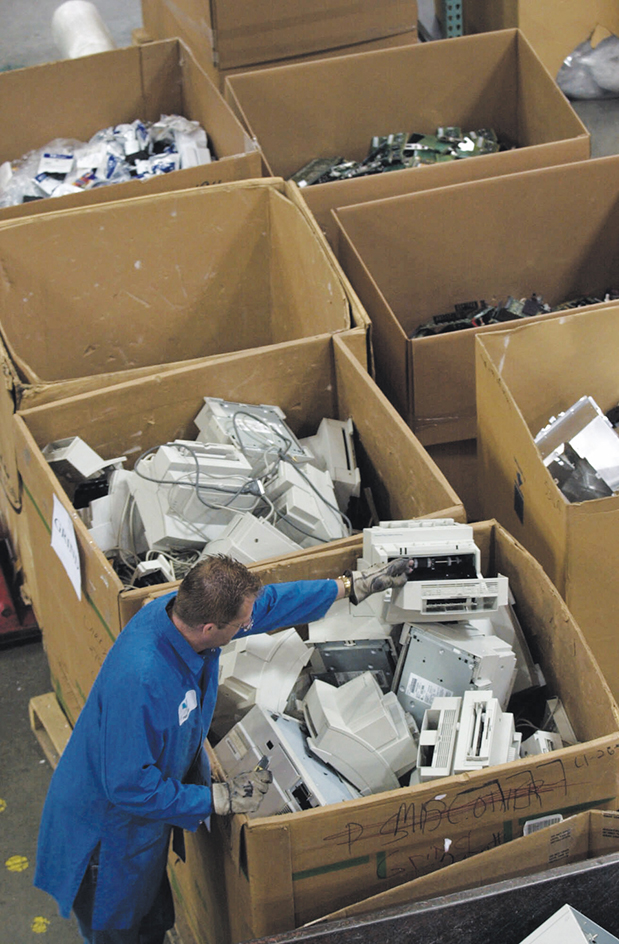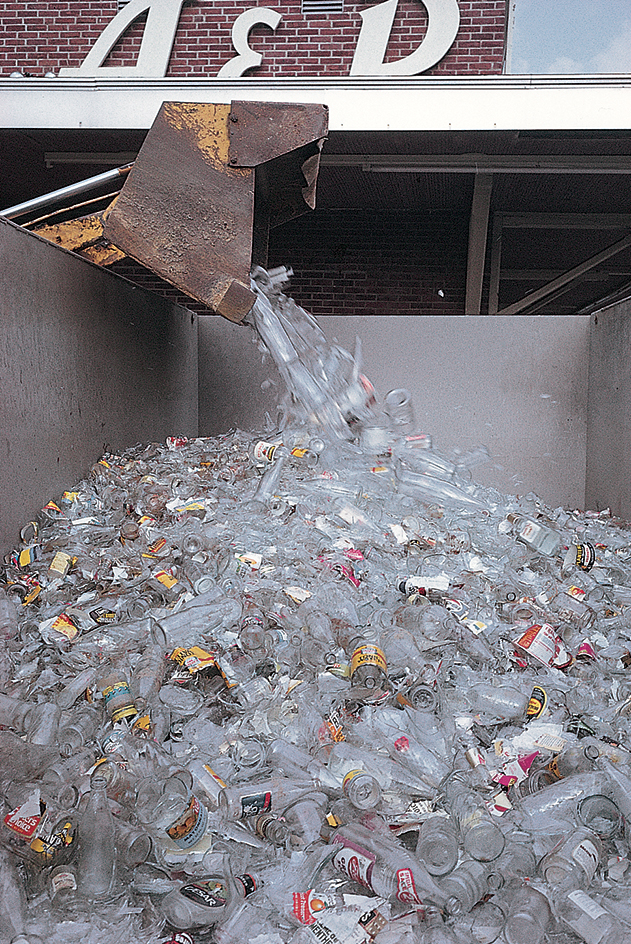Recycling is the collection, processing, remanufacture, and reuse of materials that otherwise would be thrown away. Commonly recycled wastes include aluminum and steel cans, glass containers, newspapers, and office paper. Recycling programs also collect plastics, used motor oil, magazines, and computers, cellular telephones, and other electronic equipment.
Recycling helps conserve raw materials and energy needed to make new products. It also keeps wastes from being buried in landfills, saving scarce landfill space. In addition, recycling helps reduce the pollution that may result from waste disposal.
Some manufacturers purposely design new products to be recycled. They may even sell their products under a leaselike arrangement or exchange program. Such programs encourage the customer to return used items to the manufacturer, which can recycle them.

Use of recycled materials.
Recycled wastes provide basic raw materials, sometimes called scrap or feedstocks, for manufacturing a variety of products. Recycling has been an important source of feedstocks for the iron and steel industry and for papermaking since the early 1900’s. Manufacturers use aluminum from recycled cans to make new cans and other products. Recycled paper is used not only in paper and cardboard but also in such materials as insulation and animal bedding. Manufacturers grind up waste glass and use it to make new glass containers and as a substitute for sand in concrete. Some plastic containers can be melted and molded into new plastic products. Recycled motor oil can be used as industrial fuel oil.
Aluminum recycling
Such organic waste as plant material and food scraps can be recycled through composting. In this process, the collected waste is allowed to decay into a substance that can be added to soil to improve it.
Collecting materials.
Recyclable materials have the most value if they are not mixed with garbage but are sorted before the garbage is sent for disposal. This sorting keeps materials from becoming contaminated, which lowers their usefulness and value. Separating recyclable materials can be more complicated when done at a waste-processing plant. Such special equipment as conveyor belts, screens, and magnets is used to separate large quantities of waste mechanically.
Recycling plastic
Recyclable materials are collected from consumers mainly through (1) buy-back centers, (2) drop-off centers, and (3) curbside collection programs. Buy-back centers pay people for materials they bring in. People are asked to separate recyclables by type and to separate glass by color. Drop-off centers are usually open longer hours than buy-back centers but do not offer money for the materials. Many communities require residents to participate in curbside collection programs. In these programs, residents of a community separate their materials and put them on the curb by their homes. Trucks pick up the materials and bring them to a central plant for processing. Curbside recycling usually recovers the greatest quantity of materials.

Many businesses and industries also take part in recycling efforts. Offices can recycle such wastes as paper and cardboard. Many countries have laws that require or encourage businesses to purchase products made from recycled materials, such as office paper. These laws provide incentives for businesses to invest in recycling equipment.
Paper recycling
Prices paid for recycled waste usually depend on local demand, the quantity that a seller can guarantee to the market, and the degree of contamination of the material. Buyers often reject loads of recyclables that are too dirty.
Recycling is most successful where it is less expensive than other methods of waste management. For example, recycling programs work well in many European countries and in Japan. These areas have ideal conditions for recycling, including high population density, plentiful recyclable materials, low transportation costs, and a shortage of landfill space.
